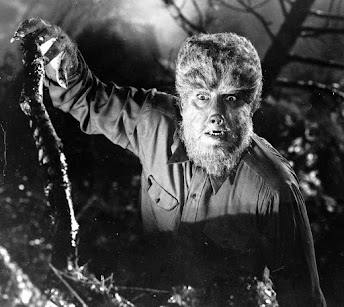Folklore to pop Culture shift of the Werewolf (capstone)
The Folklore/Original Werewolf
The European Folklore version of the werewolf was heavily influenced by the Catholic church. The church played a much bigger role back in the 17 and 1800s when the werewolf first started taking off. You can see the religious connections in how Werewolfs were created. The main way someone became a werewolf was when they made a pact with the devil, or if they performed a satanic ritual where they drank water out of the paw print of a wolf. Another main point of the classic werewolf was in how it transformed. In Traditional Folklore, the werewolf chooses when it wants to transform from man to wolf. This follows the religious creation themes that the werewolf has chosen this life. That the Werewolf has chosen to be a harm to society. Another major difference is that the werewolf is usually just depicted as a large wolf not a hybrid cross between man and wolf.
Also, the main way to cure someone from being
a werewolf is through an exorcism
Societal meaning of the Traditional Werewolf
I believe the European Folklore version of the werewolf was a monstrous representation of those who went against the Church. I believe that the main reason this monster was created was to help frighten off those from going against the church by showing where it could lead you. I also think the Church created this to help ostracize those who did not belong to the church. The Church turned these outsiders into monsters. This helped make it easier to turn public opinion against them or put the outsiders at fault because they became a more well-defined "out-group" from the Church and the rest of society. Also helped convince people that the people who went against the church were evil and dangerous.
The newer/pop-culture version of the Werewolf
The Newer pop-culture version of the werewolf has many more adaptations and styles but they do have a commonality in that they differ from the Folklore version. The new version of the werewolf is born almost always when someone is bitten by a wolf or creature. The majority of newer depictions is almost always a hybrid cross between wolf and man. You also begin to see werewolves transform only during a full moon, and that they have no control over their own actions. Another key difference is that the way to get rid of werewolves is using silver bullets.
Societal Meaning of the new Werewolf.
The new werewolf represents different misunderstood fringe groups. The major change is that the werewolf of today is forced to turn into a werewolf, and can't control what they do as a werewolf. This paints the werewolf in a much brighter light than before. They are now a victim to the curse as much as the people they attack. I think this transition was made because the people werewolves represent are outgroups that cant control their curse. For example one of the outgroups werewolves were able to represent was the Aids community. during the 70s and 80s, people with aids were rejected and cast away from society. They were feared and misunderstood. This is similar to the werewolf, they are feared and misunderstood due to something out of their control. Just like Remus Lupin in Harry Potter, he is a caring mentor to Harry, but due to his curse, he is presumed to be dangerous and unfit to teach. Another major change is how werewolves have romantic interests with humans. I think this increase in relationships can be interpreted in many ways. One of the ways is a cautionary tale. One that emphasizes that people might have a secret dark side to them and that they can't control that dark side. Also, it could embody the push to normalize "untraditional" relationships (interracial, homosexual, transgender). They could use these relationships similar to Beauty and the Beast where just because someone is different it doesn't mean they aren't human and that they don't love.
The Reason why the Werewolf changed
Like most monsters, the werewolf was influenced by different societal norms and settings. In the case of the werewolf it still usually represented an outgroup or societal outcast, even if the outgroup changed from when it was first created. The outgroup that werewolves represented in European folklore were the outcasts that rejected the church. As the church lost the power and influence over people's daily life those who rejected the Church were no longer painted as outcasts and the werewolf lost its original purpose. Until it began representing new out-groups in the 20 and 21st century. These outgroups now tended to be misunderstood, victims of societal ignorance. Which mirrored how the werewolf was portrayed more and more as misunderstood and cursed, rather than inherently evil. As time goes on I expect the Werewolf to embody more and different outgroups. I also think the werewolf can start to even embody a transformational/hero role as someone who learns to control their demons and use them for good.








Comments
Post a Comment